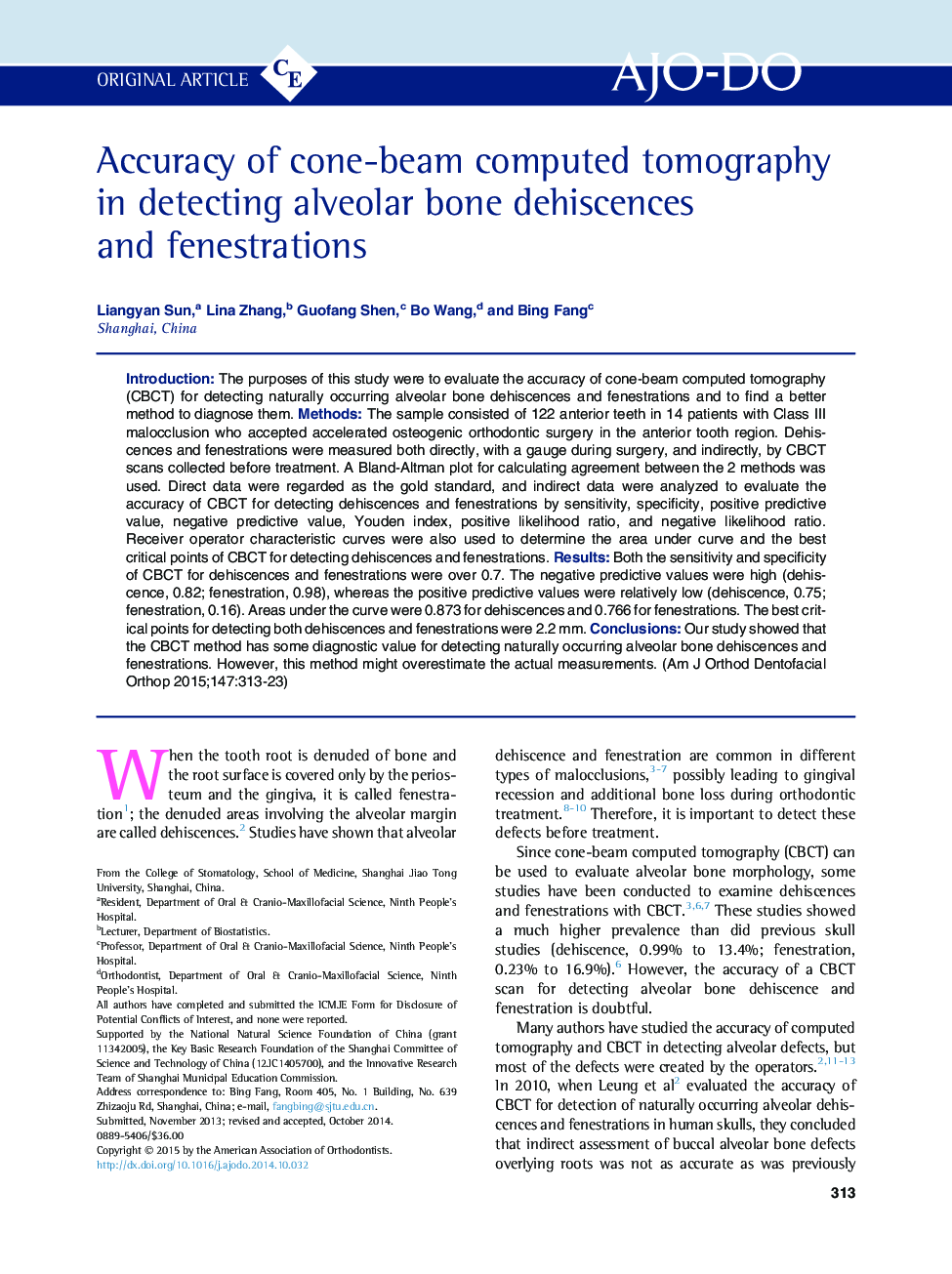| کد مقاله | کد نشریه | سال انتشار | مقاله انگلیسی | نسخه تمام متن |
|---|---|---|---|---|
| 3115828 | 1582692 | 2015 | 11 صفحه PDF | دانلود رایگان |
• Cone-beam computed tomography (CBCT) can be used to detect dehiscences.
• Dehiscence measurements were systematically overestimated when the vertical diameter was >3 mm.
• Fenestrations were also systematically overestimated.
• We recommend setting the critical point for fenestration on the CBCT (CPFC) at 2.2 mm and the critical point for dehiscence on the CBCT (CPDC) at 2 mm.
• CBCT has diagnostic value for naturally occurring alveolar bone dehiscences and fenestrations.
IntroductionThe purposes of this study were to evaluate the accuracy of cone-beam computed tomography (CBCT) for detecting naturally occurring alveolar bone dehiscences and fenestrations and to find a better method to diagnose them.MethodsThe sample consisted of 122 anterior teeth in 14 patients with Class III malocclusion who accepted accelerated osteogenic orthodontic surgery in the anterior tooth region. Dehiscences and fenestrations were measured both directly, with a gauge during surgery, and indirectly, by CBCT scans collected before treatment. A Bland-Altman plot for calculating agreement between the 2 methods was used. Direct data were regarded as the gold standard, and indirect data were analyzed to evaluate the accuracy of CBCT for detecting dehiscences and fenestrations by sensitivity, specificity, positive predictive value, negative predictive value, Youden index, positive likelihood ratio, and negative likelihood ratio. Receiver operator characteristic curves were also used to determine the area under curve and the best critical points of CBCT for detecting dehiscences and fenestrations.ResultsBoth the sensitivity and specificity of CBCT for dehiscences and fenestrations were over 0.7. The negative predictive values were high (dehiscence, 0.82; fenestration, 0.98), whereas the positive predictive values were relatively low (dehiscence, 0.75; fenestration, 0.16). Areas under the curve were 0.873 for dehiscences and 0.766 for fenestrations. The best critical points for detecting both dehiscences and fenestrations were 2.2 mm.ConclusionsOur study showed that the CBCT method has some diagnostic value for detecting naturally occurring alveolar bone dehiscences and fenestrations. However, this method might overestimate the actual measurements.
Journal: American Journal of Orthodontics and Dentofacial Orthopedics - Volume 147, Issue 3, March 2015, Pages 313–323
